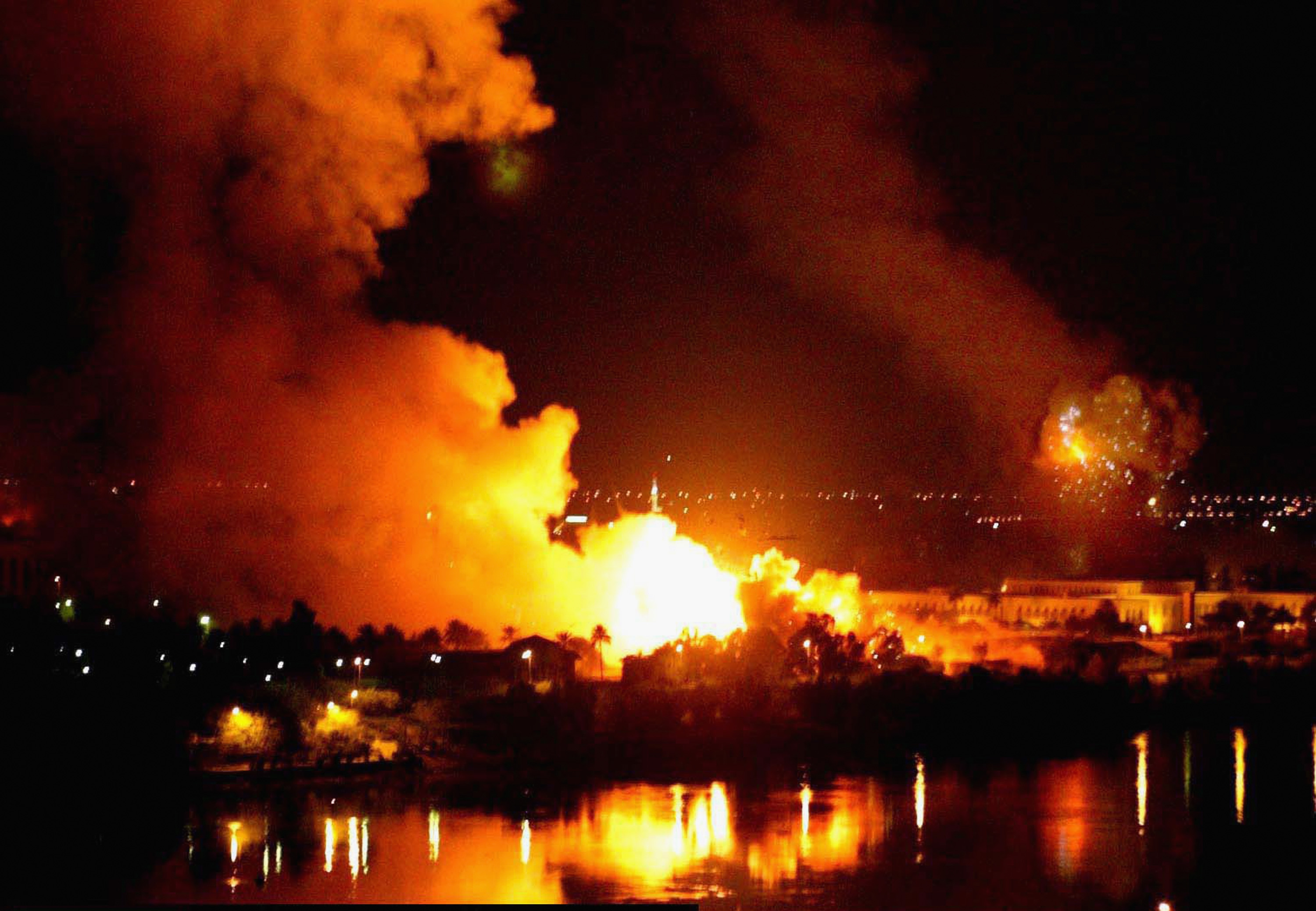
U.S. attack on Baghdad, 2003 / Getty
Last week, the Pentagon told you the costs of the war on terror had eclipsed $1 trillion. Wednesday morning, a panel of academics experienced in war accounting says that’s only a down payment — and that its real, total cost is around $5 trillion.
Five trillion dollars: that’s $16,000 per American; $64,000 for a family of four.
The final tally of the wars in Afghanistan, Iraq and Pakistan will reach at least $3.7 trillion, and could go as high as $4.4 trillion, according to a study done by Brown University’s Watson Institute for International Studies. Borrowing the money needed to fight the wars will cost an estimated additional $1 trillion through 2020, according to the study.
Its “Costs of War” study group brought together some two dozen academics to account for the wars’ costs — along with their casualties — amid sloppy record-keeping on both fronts. The study says an “extremely conservative” death toll is 225,000, with 365,000 wounded. U.S. dead include 6,000 troops and 2,300 contractors.
The report concludes:
However one judges the US waging of the wars in Afghanistan, Iraq, and Pakistan, at the very least, we should know what each of those wars has been like. We should know who has been killed, what kinds of wounds have been suffered, and what kinds of economic costs and consequences have been incurred. Those costs have been consistently minimized, misunderstood, or hidden from public view.
The reports’ authors are academics from Brown and Boston universities and other institutions, and give the wars’ costs a more rigorous scrub than the government, which has consistently under-estimated the wars’ costs and duration.
One gets a sense of the immense amounts of money being poured into security whenever one visits a federal installation ringed with new barricades manned by new guards, 24/7. The public airwaves in the capital are filled nonstop with ads from companies you have never heard of seeking to hire “personnel holding Top Secret/SCI clearances” for thousands of jobs funded by the U.S. Treasury. Washington subway billboards — especially those near the Pentagon — are crammed with huge glossy photographs of multi-billion-dollar weapon systems that defense contractors want the government to buy.
The study says, contrary to what the government told us last week, the cost of the war on terror since 9/11 is not $1 trillion but $2.5 trillion. “Our estimate is larger because we include more than the direct Pentagon appropriation for the wars in Afghanistan and Iraq, and the larger global war on terror; wars always cost more than what the Pentagon spends for the duration of the combat operation,” the report says.
The Pentagon spins the costs of its wars to the U.S. public the same way it spins the cost of its weaponry. Every aircraft the military buys, for example, carries several different price tags, depending on what is being measured. Here’s a tip: the Pentagon rarely cites the real cost of an airplane, which is the program’s total cost divided by the number of planes it is buying. Instead, it will cite the plane’s “fly-away” cost — which doesn’t include the development required to build it, and other hidden expenses. Such sleight-of-math can cut an airplane’s cost in half.
The study’s estimate of $4 trillion also includes items not counted by the Pentagon, including homeland security, veterans care and various developmental efforts. Then there is the additional $1 trillion in interest payments on the war debt.
The costs of the wars, especially in Iraq, were dramatically low-balled by the Bush Administration. Before the Iraq war began, Larry Lindsey, a top White House economic adviser, pegged the cost of the war at $200 billion; others said $300 billion. Defense Secretary Donald Rumsfeld declared such numbers “baloney.” He also said that “it is unknowable how long that conflict will last. It could last six days, six weeks. I doubt six months.” The final U.S. troops in Iraq are slated to come home by the end of this year, nearly nine years after Rumsfeld made that estimate. Apparently, his cost estimates follow a similar trajectory.


